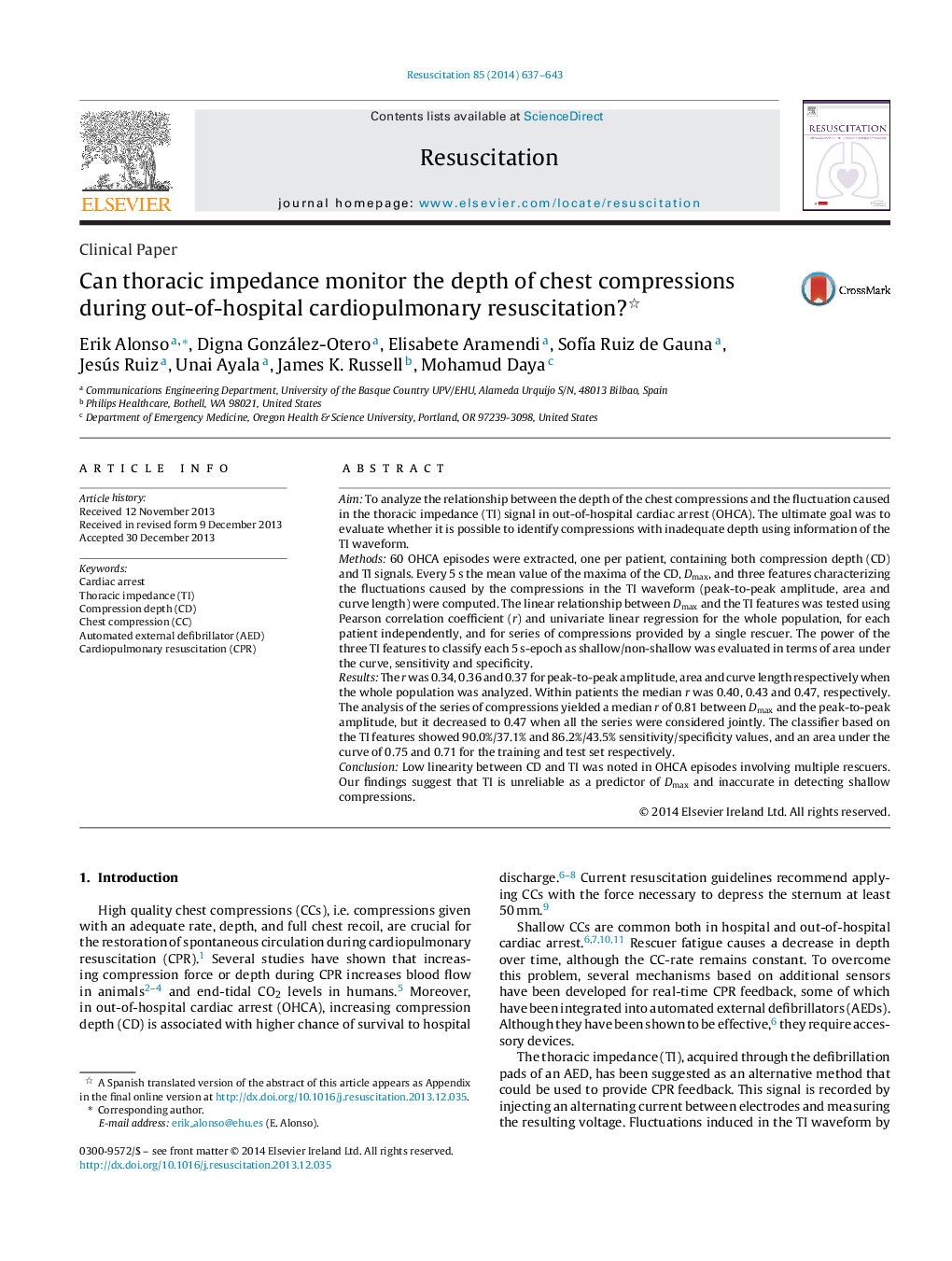| کد مقاله | کد نشریه | سال انتشار | مقاله انگلیسی | نسخه تمام متن |
|---|---|---|---|---|
| 5998405 | 1181440 | 2014 | 7 صفحه PDF | دانلود رایگان |
AimTo analyze the relationship between the depth of the chest compressions and the fluctuation caused in the thoracic impedance (TI) signal in out-of-hospital cardiac arrest (OHCA). The ultimate goal was to evaluate whether it is possible to identify compressions with inadequate depth using information of the TI waveform.Methods60 OHCA episodes were extracted, one per patient, containing both compression depth (CD) and TI signals. Every 5Â s the mean value of the maxima of the CD, Dmax, and three features characterizing the fluctuations caused by the compressions in the TI waveform (peak-to-peak amplitude, area and curve length) were computed. The linear relationship between Dmax and the TI features was tested using Pearson correlation coefficient (r) and univariate linear regression for the whole population, for each patient independently, and for series of compressions provided by a single rescuer. The power of the three TI features to classify each 5Â s-epoch as shallow/non-shallow was evaluated in terms of area under the curve, sensitivity and specificity.ResultsThe r was 0.34, 0.36 and 0.37 for peak-to-peak amplitude, area and curve length respectively when the whole population was analyzed. Within patients the median r was 0.40, 0.43 and 0.47, respectively. The analysis of the series of compressions yielded a median r of 0.81 between Dmax and the peak-to-peak amplitude, but it decreased to 0.47 when all the series were considered jointly. The classifier based on the TI features showed 90.0%/37.1% and 86.2%/43.5% sensitivity/specificity values, and an area under the curve of 0.75 and 0.71 for the training and test set respectively.ConclusionLow linearity between CD and TI was noted in OHCA episodes involving multiple rescuers. Our findings suggest that TI is unreliable as a predictor of Dmax and inaccurate in detecting shallow compressions.
Journal: Resuscitation - Volume 85, Issue 5, May 2014, Pages 637-643
